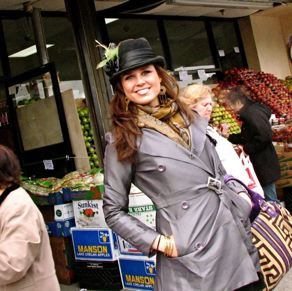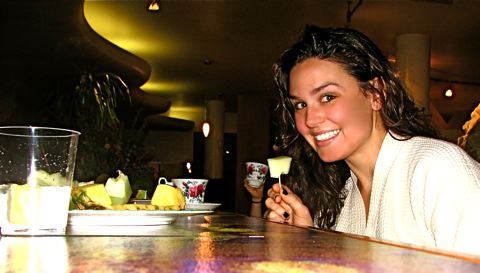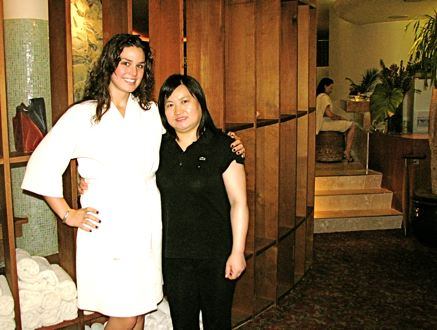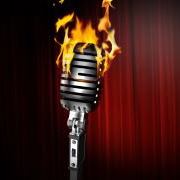Travel Tips
America’s Gypsy: Exploring Koreatown in Los Angeles
 America’s Gypsy Ana Berry travels the world within America, finding unusual and often unexpected cultural adventures in America’s diverse communities. Read on for her adventures in L.A.’s Koreatown …
America’s Gypsy Ana Berry travels the world within America, finding unusual and often unexpected cultural adventures in America’s diverse communities. Read on for her adventures in L.A.’s Koreatown …
Located in the Mid-Wilshire district of Los Angeles, Koreatown is rich with historic brownstones, high-end Asian boutiques, food markets, and spas.
In the 1960s, when restrictions were eased on immigration between East Asia and the U.S., Korean immigrants and investors came to California in droves.
Today, the area boasts a population of 160,000 people within 5 square miles, making it the largest concentration of Koreans outside of Korea.
 In search of the ultimate relaxation, I headed toward the Korean day spas I had heard so much about. Normally in this city, luxury comes at a high price. Turns out, that’s not the case in Koreatown. For less than a $100, I spent hours getting the works done in an all-women’s Korean spa, or jimjilbang.
In search of the ultimate relaxation, I headed toward the Korean day spas I had heard so much about. Normally in this city, luxury comes at a high price. Turns out, that’s not the case in Koreatown. For less than a $100, I spent hours getting the works done in an all-women’s Korean spa, or jimjilbang.
My ajuma (the woman giving treatments) massaged, oiled, salted, and scrubbed me as if I were a piece of meat being tenderized and seasoned for the grill. Standing barely 5 feet tall, she was extremely strong and … well, very thorough.
 On my way to my treatment, I passed naked women lying on beds and heard the sounds of wet flesh hitting wet flesh and realized that not only was I naked and wet, so was my ajuma.
On my way to my treatment, I passed naked women lying on beds and heard the sounds of wet flesh hitting wet flesh and realized that not only was I naked and wet, so was my ajuma.
It was a mermaid’s oasis, circulating my senses by soaking in hot baths, plunging in cold tubs, napping in dry saunas, and sweating in steam rooms. At one point, there was definitely milk involved.
After a few hours in the spa, I was clean, relaxed and invigorated (if just a little bit violated), and ready for the Korean adventures that awaited the day.
Headed to LA? Try our Off the Brochure Travel Guide: Los Angeles.
 The streets of Koreatown took me out of Los Angeles and into a snippet of Seoul. The tall buildings were dotted with Korean billboards, while crowds of people streamed in and out of Korean boutiques and restaurants. So, of course, I had to join them.
The streets of Koreatown took me out of Los Angeles and into a snippet of Seoul. The tall buildings were dotted with Korean billboards, while crowds of people streamed in and out of Korean boutiques and restaurants. So, of course, I had to join them.
I entered the 24-hour Tofu House and was greeted by a chorus of “anyong haseo.” Almost immediately after sitting at the table, waiters brought over banchan, traditional side dishes: odaeng (fish cakes), mu (radish), sigumchi (spinach leaves), and spicy kimchi (pickled cabbage, thought to stimulate the appetite).
I ordered the maeuntang (hot fish soup) which resembled a witch’s cauldron with spices bubbling a heavy iron bowl. The waitress spoke no English but explained to me with her hands how to crack an egg and stir it in the boiling soup. Delicious, spicy, tangy, and slightly sweet. I was pleased to note how healthy the meal was, as it involved little fat but relied heavily on strong flavors and pungent spices.
For more ideas on where to eat in Los Angeles, don’t miss Three Days, Nine Meals: Los Angeles Restaurants.
 The meal was so delicious I had to buy some of these Korean delicacies as a souvenir. At the Han Kook Market, I found exactly what I wanted: jang uh (saltwater eel), kimchi (previously mentioned, also sometimes spelled “kimchee”) and dongdong ju (Korean rice wine).
The meal was so delicious I had to buy some of these Korean delicacies as a souvenir. At the Han Kook Market, I found exactly what I wanted: jang uh (saltwater eel), kimchi (previously mentioned, also sometimes spelled “kimchee”) and dongdong ju (Korean rice wine).
Full from my maeuntang and relaxed from my jimjilbang, I needed a drink. And to complete my gypsy caravan in Koreatown, I wanted one last Korean cultural adventure: to sip soju (rice-derived liquor) and to sing karaoke.
It was Elvis Night at the Brass Monkey, (www.cafebrassmonkey.com) a karaoke hot spot, and already a crooner was serenading a group of giggling girls with “Blue Moon” in Korean.
 Tossing back the last drops of soju, I got up and sang “Love Me Tender” to a bunch of smiling strangers. In this moment of being in a Korean karaoke bar singing iconic American music, I felt the magic of connecting with cultures.
Tossing back the last drops of soju, I got up and sang “Love Me Tender” to a bunch of smiling strangers. In this moment of being in a Korean karaoke bar singing iconic American music, I felt the magic of connecting with cultures.
As the sun began to set, the bright neon lights took over the skyline of Koreatown. And even though I have never been to Korea, I felt like I had just explored the soul of Seoul, right here in America.
You don’t have to travel to Los Angeles, let alone Korea itself, to experience Korean culture. There are well-established Korean neighborhoods in cities as varied as Orange County (California), Manhattan, Seattle, Chicago, Dallas, and Doraville (Georgia).
Key Korean Phrases
Hello: anyong haseo (un young ha say o)
Thank you: Kamsamnida (kam sam nee da)
Goodbye: anyong gaseyo (un young ga say o)
By Ana Berry for PeterGreenberg.com. Visit Ana on the Web at www.anaberry.com and www.americasgypsy.com.
Don’t miss Ana’s exploration of New York’s Bukhari community with America’s Gypsy: Rego Park, New York’s Bukhari Community.
Interested in exploring Korean culture at the the source? Don’t miss our Off the Brochure Travel Guide to Seoul, South Korea.
And for quirky guide to the city try Suzy Gershman’s Postcard from Seoul, South Korea.
Get more information in our section on North & South Korea.












